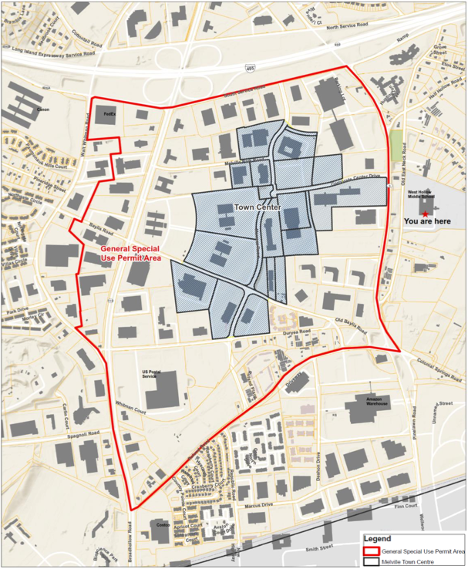The following was exclusively published by The Foggiest Idea on June 20, 2024. Interested in supporting The Foggiest Idea’s award-winning reporting and analysis? Click here.
BY RICHARD MURDOCCO
The recent letter by Half Hollow Hills Central School District’s Superintendent Dr. Patrick Harrigan and its Board of Education President Diana Acampora to the Town of Huntington started out innocuously enough.
“Over the past year, the Half Hollow Hills Board of Education president, the Board of trustees, and I have attended public hearings, small stakeholder meetings, and civic association discussion groups regarding the Melville Town Center Overlay District,” they wrote on June 11, 2024. “While these opportunities have provided some information regarding your vision, many details remain elusive.”
From there, they took a decidedly NIMBY-esque turn. “[I]n the absence of significant impact fees to the Half Hollow Hills CSD,” they contended, “it would be irresponsible for us to remain silent and ask our current residents to finance new high-density housing.”
For the uninitiated, impact fees are what real estate developers pay to offset and/or mitigate the projected impacts of growth.
What stoked Harrigan and Acampora’s ire is that Huntington Town Supervisor Edmund Smyth is proposing to redevelop wide swaths of idle commercial office properties in Melville.
Their missive reads less like a nuanced policy discussion, and more like an anti-development rant that you’d see posted on Facebook.
Redeveloping Melville’s office parks has been on the Town of Huntington’s radar for quite sometime with a significant effort gaining steam as far back as 2015.
These days, Huntington is pitching a proposed mixed-use “Town Center” for the areas south of the Long Island Expressway. The proposal includes locating storefronts at ground level and adding residential units above them. The Town expects the project to yield up to 3,000 new units of housing and achieve a build-out in seven to 10 years.

Pictured: Areas targeted for a new overlay zone as part of the Melville Town Center project. The town claims that the project would be re-evaluated by planners at 400 unit increments. (Source: Town of Huntington)
The proposal has the local civic groups ablaze. But some of their fury has been fueled by egregiously misleading claims that Huntington was pitching upwards of a preposterous 40,000 units. That is not true.
At the very least, Huntington is trying to address the significant housing shortage our region faces, because here inventory is minimal at best, and pricing is sky-high at worst. As of this writing, the median single-family home in Suffolk County sells for $651,000 in 2024, a 14.2% increase compared to last year, according to One Key MLS. In Nassau County, the median price for a single-family home has hit $790,000, a 13% rise.
Local civic groups dismiss the Melville plan as the typical “build, build, build” compulsion that they expect from developers. But Huntington Town has, in fact, demonstrated good faith here. Town officials have made public outreach their priority by scheduling a series of community events about their proposal.
Even more significant are the Town’s plans to phase it in slowly so they can assess the rate of growth for every 400 units, a reasonable and measured approach that planners have argued for in other large development projects.
The reality is that Melville’s current land-use patterns have been rendered mostly obsolete by our post-pandemic work trends on Long Island. In 2023, Class A office properties – think the fancier type of offices where you’d find an accounting firm and marble floors – had a vacancy rate of a whopping 12.7%. Meanwhile, the more traditional older Class B spaces remained empty at rates hovering around 9%. All the while, industrial demand is still red-hot as commercial developers have remained bullish throughout Nassau and Suffolk Counties.
The great irony in all this is that Long Island’s school districts have collectively been facing declining enrollment. Nevertheless, they almost reflexively protest against any proposal for residential development.
Look at Half Hollow Hills itself. This Suffolk district has closed two facilities due to low enrollment in recent years: Chestnut Hill Elementary, which was shuttered and leased in 2014, and Forest Park Elementary School, which is currently operating only as a specialized preparatory school for students with ADHD. And there were reportedly 80 empty classrooms district-wide when these measures were taken.

Pictured: The former Chestnut Hill Elementary School building, which was shuttered by the Half Hollow Hills School District in 2013. (Source: NearMaps)
These days, Half Hollow Hills unfortunately seems to be taking a similar tact to what school districts in Hauppauge and Syosset both did when they faced the prospect of growth in their communities.
In 2021, Hauppauge Schools went so far as to sue the Town of Smithtown over a rezoning decision that would allow housing in select areas of the Long Island Innovation Park at Hauppauge. The case was promptly dismissed by a Suffolk County Supreme Court judge.
Back in 2016, Syosset Central School District helped the Town of Oyster Bay tank a proposal for a large mixed-use development on one of Nassau County’s last remaining vacant parcels at Robbins Lane along the LIE. Now, an Amazon warehouse occupies the site.
As TFI noted in its Newsday op-ed on the issue, “While local schools deserve a seat at the table as much as any other community stakeholder, these entities cannot singularly determine our region’s developmental future by holding projects accountable outside of their purview.”
Their actions are counter-productive when it comes to meeting our regional economic goals. “By opposing local development efforts, such intervention by area districts threatens to upend not only the formal municipal land use review process,” TFI explained, “but also the community-based planning model as a whole.”
Years later, Long Island school districts continue to be emboldened by an anti-development frenzy in their community, and local governments are embattled for just trying to do their job.
Unfortunately it seems like the lessons of Long Island’s declining demographics haven’t sunk in. And far too many of these districts are flunking out when it comes to helping our region become economically more self-sufficient.
WITH SPENCER RUMSEY
Richard Murdocco is an award-winning columnist and adjunct professor in Stony Brook University’s public policy graduate program and School of Marine and Atmospheric Sciences. He regularly writes and speaks about Long Island’s real estate development issues. You can connect with him on LinkedIn.










